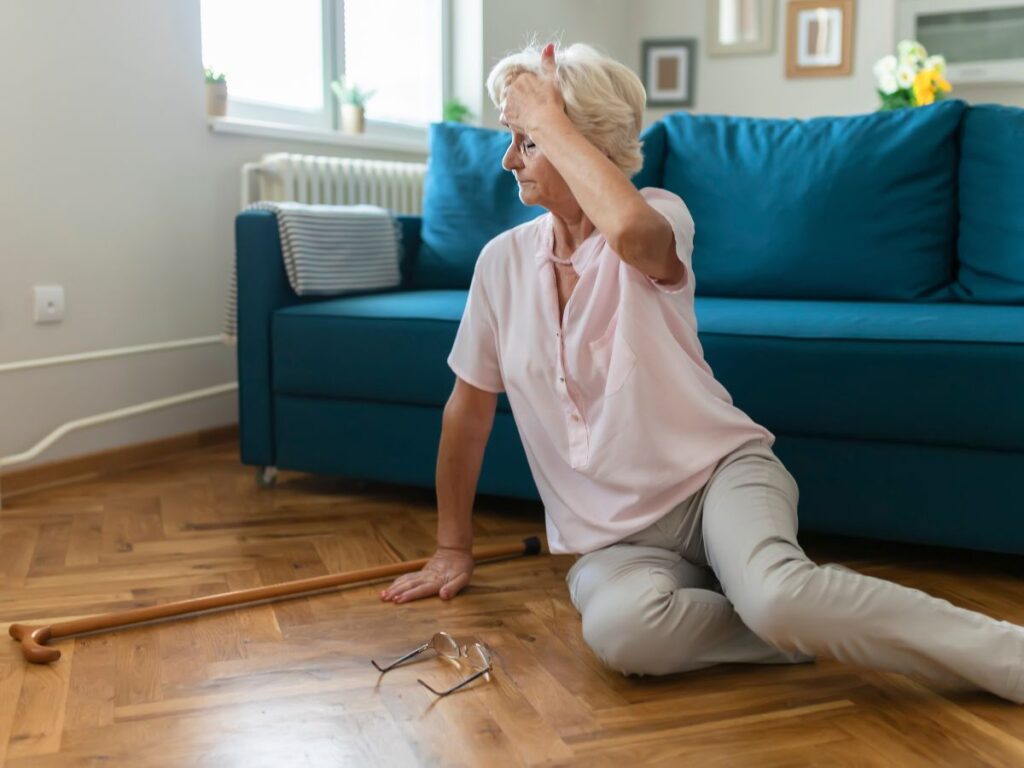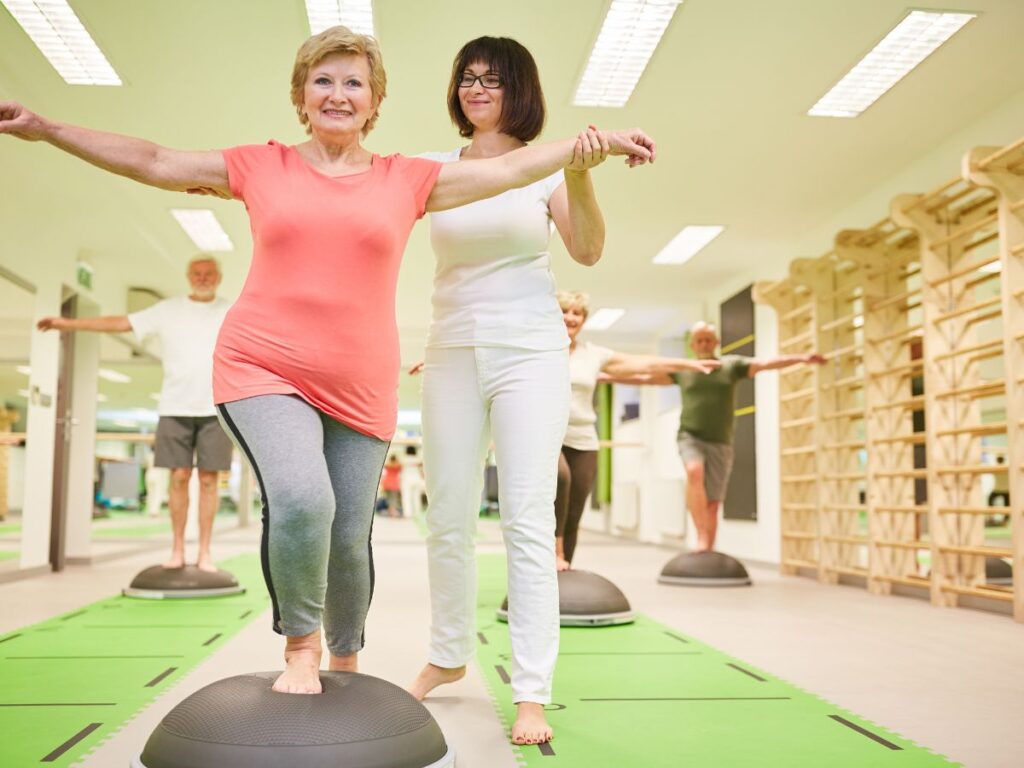Why Some Older Adults Experience Frequent Falls
While occasional stumbles can happen to anyone, recurrent falls in seniors often signal deeper issues—like significantly weak leg muscles, sensory deficits in the feet, or unresolved posture misalignments that throw off balance. Each tumble raises the chance of fractures or severe bruises, fueling anxiety about walking. Therapy for recurrent falls targets these root triggers: building muscle endurance through safe exercises, refining steps with specialized drills, and using Dr. Elham’s alignment checks to correct any spinal subluxations that intensify imbalance. Over repeated sessions, older adults not only lower their fall count but also reclaim the confidence to move around without bracing for a fresh tumble, improving both safety and emotional well-being in daily life.
The Domino Effect of Repeat Falls
A single fall often instills fear, prompting seniors to limit movement, which weakens muscles further—leading to more stumbles. Injuries like sprained wrists or minor fractures can hamper therapy progress if not addressed. Sedentary behaviors degrade leg reflexes and stability, locking older adults in a cycle of vulnerability. Recurrent fall therapy breaks this cycle by progressively reintroducing controlled stepping tasks, mild strength routines, and posture realignment via Dr. Elham’s input. Slowly, seniors rebuild muscle synergy and adopt careful gait strategies that fend off the triggers once leading to repeated collapses. Freed from that ongoing cycle, they see each day’s steps as safer, spurring more activity that cements steadier movement over time.
Core Areas of Recurrent Fall Therapy
A thorough regimen generally encompasses:
- Strength Resurgence: Targeted moves—like seated leg presses or hip abductions—to bolster quads, calves, and glutes for stable footing.
- Balance & Coordination Drills: Single-leg stands, tandem walking, or stepping over small barriers that train reaction speed and posture control.
- Gait Pattern Adjustments: Coaching on stride length, foot rollover, or turning technique to reduce wobbles.
- Home Hazard Assessment: Identifying furniture layouts, lighting, or carpets that keep triggering stumbles.
- Spinal Alignment by Dr. Elham: Gentle manipulations eliminating pelvic or lower-back subluxations that skew weight distribution.
By weaving these elements, older adults systematically dismantle the chain of risk factors behind repeated falls, forging a future where mobility is stable and self-assured.
Dr. Elham’s Alignment for Chronic Falls
If the lumbar region is misaligned, an older adult might subtly tilt forward or shift weight, magnifying tripping hazards. Dr. Elham’s mild adjustments reset such subluxations, letting both legs share the load equally. Cervical alignments also matter: a bowed head can reduce the line of sight and hamper reflexes when stepping unexpectedly. By consistently confirming posture alignment, therapy tasks—like step-ups or directional changes—become more effective, fostering real, lasting improvements in daily stepping. With each visit, older adults sense their center of gravity more securely, noticing fewer jolts or sways that once preceded a fall.
Why Tackle Falls Repeatedly
Some might think a single therapy course after a fall is enough. But if falls keep happening, deeper reevaluation is vital. A missed nerve issue, an ongoing pelvic tilt, or a neglected environment hazard may be at play. Recurrent fall therapy re-checks these angles. Dr. Elham might spot a fresh subluxation from a recent tumble. Therapists could revise exercise intensities if older adults regressed from fear-based inactivity. Iterative approach hones the root causes, ensuring no hidden factor—like medication changes or slight vision deterioration—lingers. This persistent refinement eventually stabilizes seniors’ locomotion, preventing the pattern of “fall, partial therapy, repeat” from persisting throughout their retirement.
Sustaining Gains Between Sessions
Therapists typically assign short daily tasks—like balance stands near a counter, careful step-ups on a low stool, or gentle chair squats. If fatigue builds, a seated rest or mild foot massage can help. Dr. Elham may advise posture checks—ensuring the pelvis stays level when walking across a room. Over weeks, these micro-efforts integrate therapy’s benefits into routine chores. A once-dreaded trip to the kitchen for tea feels less perilous, and venturing outside for a short walk no longer looms with fall anxiety. Freed from repeated tumbles, older adults see each step as reaffirmation of their body’s growing stability.
Real-Life Obstacle Solutions
Recurrent fall therapy focuses on everyday stumbling points—like turning to enter a cramped bathroom or stepping onto a busy sidewalk curb. Under therapist supervision, seniors practice these moves, refining foot placement and torso control. Dr. Elham’s alignment ensures no hidden pelvis shift unbalances them mid-turn. As seniors conquer these scenarios, they transfer that skill into daily living, whether pivoting to answer the door or stepping over a low threshold. This practical success transforms the home from a labyrinth of tripping hazards into a comfortable space, while outside errands—like crossing a small park—feel less hazardous. Ultimately, the sense of confinement lifts, replaced by calm confidence in each step.
Risks of Ignoring Repeated Falls
Multiple tumbles often pave the way to major fractures—like hip breaks—that can restrict older adults to bed rest or assisted living. Emotional distress surfaces if fear overrides normal routines, undercutting social ties. Chronic injuries may flare if small sprains or bruises never fully heal, weakening the body further. Over time, posture might degrade severely from protective hunching, complicating therapy whenever it does begin. By contrast, addressing repeated falls promptly—through muscle reinforcement, subluxation fixes, and environment adjustments—paves a safer, more active life. Dr. Elham’s checks also avert degenerative spinal shifts that intensify imbalance. Seniors avoiding these pitfalls reclaim autonomy instead of losing it to repeated tumbles.
Typical Recurrent Fall Rehab Session
Therapists begin by asking about the most recent tumbles—what triggered them, which movements felt shaky. A gentle warmup, maybe ankle circles or side steps, readies muscles. If Dr. Elham identifies a misaligned lumbar region from the last fall, mild manipulation corrects it. Then seniors tackle progressive drills—like stepping over small cones, practicing partial lunges while holding a stable surface, or turning 180 degrees in place. Observing posture or foot scuffing, the therapist corrects any lapses. If the senior fatigues, short rests keep the session safe. Over multiple visits, these tasks expand in challenge, ensuring older adults master real-world moves that previously spelled disaster. Reduced falls or zero stumbles show therapy’s success, with a newly secure stride ensuring each day’s tasks no longer risk another trip to the floor.
Renewing Safety and Confidence
Therapy for recurrent falls in seniors redefines life beyond the cycle of tumble and recovery. By targeting the muscle weaknesses, subluxations, and environment flaws behind repeated spills, older adults break free from the fear that each step might be the next accident. Dr. Elham’s alignment ensures posture remains upright, while guided exercises hone balance reflexes. Over consistent effort, the frequency of falls dwindles or disappears, returning a sense of agency. Rather than anticipating the worst while walking, seniors step forward calmly—visiting family, enjoying local shops, or simply feeling at home in their own space—because they know their body is equipped to stay upright and stable, even in the face of everyday surprises.






